Developer: Atlus Publisher: Taito Release: 08/87 Genre: Action
I love Breakout in all its form. The simple gameplay loop of bouncing a ball to break blocks is as addicting as creating lines in Tetris. I appreciate the varied takes on the formula even when they turn out subpar like Devilish. But not all “versions” of Breakout are created equal. Arkanoid is probably the most popular variation of Breakout there is. Yet the NES game confounds me like no other. I like the inventive stages but the damn ball physics ultimately bring down what is otherwise a great game.
Originally released in the arcade in 1986 Arkanoid updated the Breakout formula by adding power-ups and more creative level design. The concept of Breakout is simple and as such the game was easily ported to every major platform of the day. The NES version is one of the most popular and even came with a special controller that honestly is not worth it. For the most part is great port but the ball physics makes it a chore to play in short order.
The premise of Arkanoid is simple. Controlling the Vaus you move side to side hitting the ball to break the bricks to move on to the next level. Bricks come in many colors and have unique properties. Most colored bricks only require a single hit to destroy. Silver bricks are the most common and require two but that number increases as you progress. Gold bricks are indestructible and are used as an impediment to force you to angle the ball to reach the blocks you can destroy. These will be the bane of your experience with Arkanoid. I like that they force you to become a better player by manipulating the Vaus to angle the ball no matter how frustrating it gets.
What sets Arkanoid apart from the other Breakout clones of the time is its power-ups. Destroying certain blocks will drop one of a number of helpful weapons. Some are convenient. Catch allows you to…..catch the ball and release it at your leisure. Enlarge doubles the width of your ship to make it easier to bounce the ball back and forth. Slow is a game changer as it slows the ball speed. This one also stacks; if you are in a situation where the ball is out of control it is a life saver. Disruption splits the ball in to three helping you to clear the field faster. The game breaker is laser. This transforms your ship and lets you blast bricks away alongside the ball. I tried to hold on to this one as long as possible. The power-ups are simple but add another dimension to an otherwise simple formula.
In the arcade Arkanoid uses a paddle that you rotate to control the Vaus. Taito released a special controller to replicate that setup for the NES but honestly it is unnecessary. This is a simple game and the NES controller is more than adequate. Arkanoid’s level design is both creative and frustrating. The way the game uses its colored blocks to force you to guide the ball rather than bounce it back and forth like a moron is clever. There are a fair few levels where there are only a few blocks to destroy. Getting to them is the problem. When it works as in stage 8 or 26 it is beautiful. When it does not it is a nightmare; stage 10 comes to mind. There is a steep difficulty curve that starts early and only becomes worse due to the wonky ball physics.
After the first few levels the game asks a lot of you. You will need to direct the ball specifically which is not easy due to the physics. The ball accelerates fast and spirals out of control quickly. Sometimes you will only have a few bounces before this occurs and death will follow shortly. There is nothing wrong with requiring some skill on the part of the player. But it should feel rewarding and not like blind luck. It is a shame as the later maps are awesome to play around in. But to get to that point requires enduring a level of frustration most will not have the patience for.
In Closing
Arkanoid is a tough sell. The concept is sound and the game is fun. But the various quirks in this version give it a rough difficulty curve that is not fun to try and work around. When everything works it is fun. When it does not it is aggravating. I like the game but not enough to recommend it however.


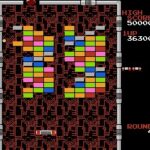
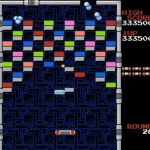
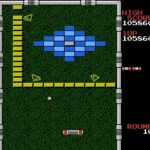


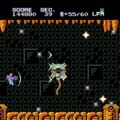

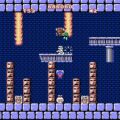
I wish this game was a little easier out of the gate because I love the concept, but I’m lucky if I get to level 3. I feel that for games like this, the first few levels should be easy so you can get used to the controls, but this game is nuts right from the start.
I hear you, the difficulty curve is steep right out of the gate and by the mid game it is insane.